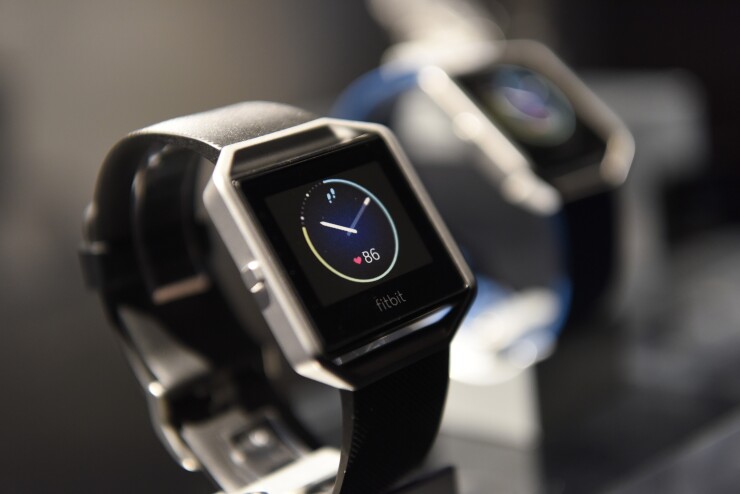The number of U.S. consumers who use wearables and mobile apps for managing their health has doubled during the past two years, but employees are reluctant to share the data from these applications with their employers.

Thirty-three percent of U.S. consumers are using mobile health apps, compared with just 16% in 2014, and 21% of consumers are making use of wearables, up from 9% two years ago, according to a survey conducted by Accenture. Released Thursday at the Healthcare Information and Management Systems Society’s annual conference in Las Vegas, the survey also found that consumers most frequently use health apps for fitness (59%), followed by diet and nutrition (52%) and symptom navigation (36%).
For a large population, such as a workforce, wearables provide a scalable and low-cost means of tracking health-related data, but the survey found that most employees are unwilling to let their employers access it.
Doctors, yes; employers, no
Ninety percent of those surveyed are willing to share data collected by their wearables with their doctors, and 66% are willing to do so with their health plan. But fewer than one-third (31%) want the information shared with their employer, according to Kaveh Safavi, M.D., an Accenture managing director. In their worst case scenario, employees fear that employers will use the data against them, he explains. In the best case, they believe it is none of their employer’s business.
Employers want wearables’ data for two reasons, Safavi explains. The first is to lower their insurance premiums by taking advantage of programs like the one offered by UnitedHealthcare, which has begun offering some discounts based on wearable data. “There is a straight line between employee activity and premium,” notes Safavi.
The second is to increase employee productivity by reducing presenteeism. “There is pretty good recognition that these wearables are contributing to making employees healthier,” says Safavi. “A lot of effort in wellness is focused on things that get to employee presentism, not just their general state of health.”
"The market has rotated from managing medical expenses to managing employee wellness."
Yet for employers to convince their employees that they should grant them access to their wearables’ data, employers must come clean about why they want the information, Safavi says. “Employers need to explain that they are using the information to help employees,” but also “because it has bearing on healthcare expenses and the state of the workforce,” he explains. “[The] market has rotated from managing medical expenses to managing employee wellness,” the consultant adds. “But the general evolution on the employer side to intervene in healthcare costs has not been as easy as they had hoped.”
How can advisers make the transition easier for their employer clients? Accenture managing director, Frances Dare, warns against advisers offering their own wearable applications. “It is not about ‘does [the adviser] have wearables?’ It is ‘what full approach are [advisers] taking?’ to engage employees and their families and deliver results,” she maintains.





